Mini-Oktoberfest For Two
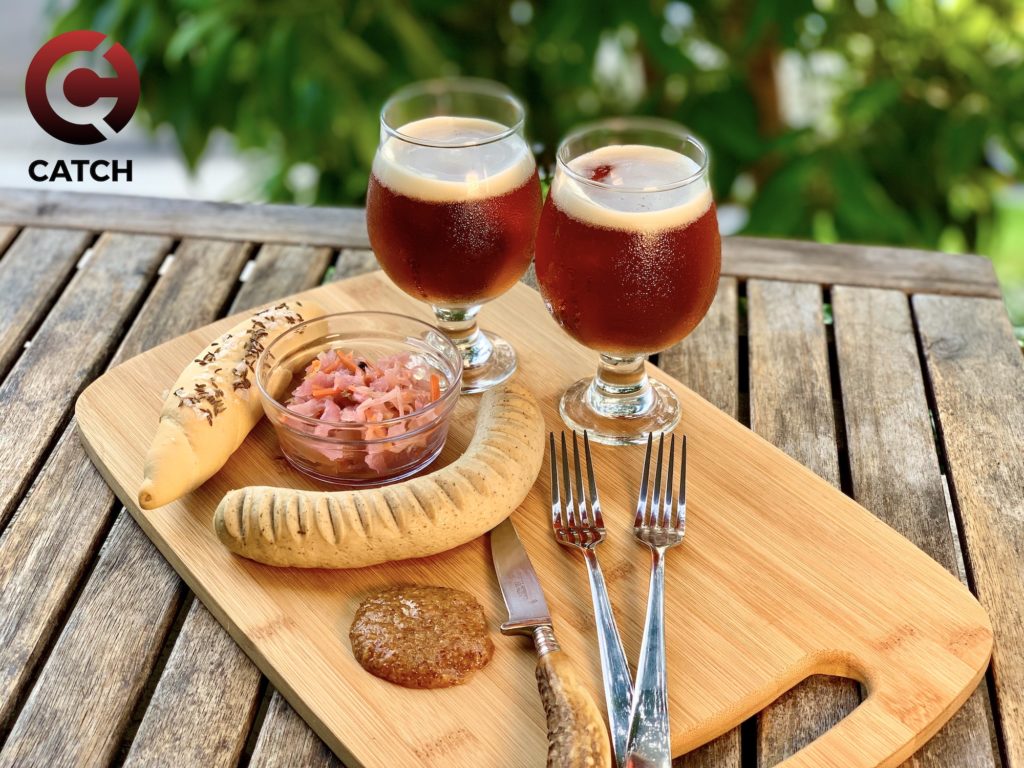
Bavaria’s oktoberfest season had to be canceled this year, but there is no reason why you can’t make your own gemütlichkeit at home.
While in North America, beer is generally not associated with the kinds of hors d’oeuvres we suggest for cocktail hour, this is simply a matter of quantity. Most Europeans are quite accustomed to enjoying small amounts beer for lunch or breaks during the workday. Traditionally, the smallest portions of beer served in southern German restaurants is ordered as a “pfiff”, an old measure amounting to roughly 7 ounces. You may be surprised: this quantity of beer contains less fewer calories than a typical martini!
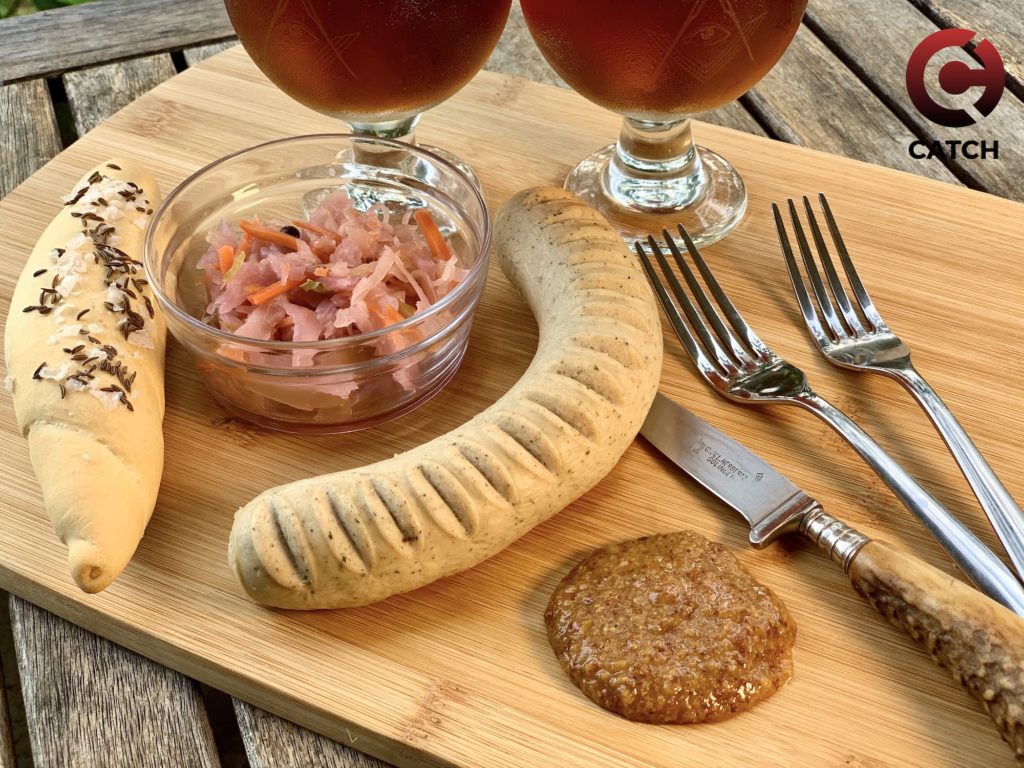
Weisswurst has been a Bavarian staple for about 200 years. It is supposed to be made with all-natural ingredients, flavored with parsley, lemon, mace, onions, ginger, and cardamom, but without nitrites. Tradition holds that it is usually consumed as a second breakfast or for lunch, together with sweet mustard and a soft pretzel or other bread. You will often find Bavarian weisswurst at well stocked delicatessen or grocery stores such as Trader Joe’s. (We got ours from European Deluxe Sausage Kitchen in Beverly Hills, where German master sausage maker Gary Troub has practiced his learned craft for decades. His wife Andrea and his daughter run the counter. By the way, for his many Jewish customers, Mr. Troub also makes a modied bockwurst with all veal but no pork).

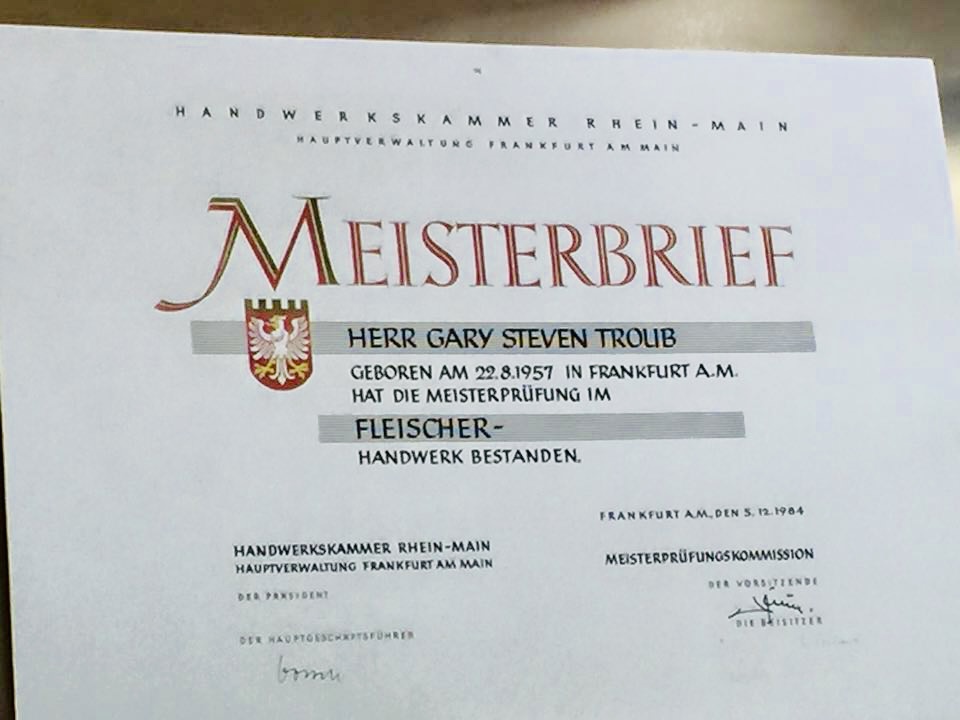
In addition, we served our Mini-Oktoberfest with sauerkraut and a home baked, traditional bread stick with caraway seeds, and coarse salt, known as “salzstange”, “kümmelstange” or “salzstangerl”. (See the recipe below). You could, of course, substitute any fresh bread you have on hand.
Heating up weisswurst is very simple and takes only minutes. You could heat the sausage in simmering salt water, but we prefer to steam it over a trivet for about 10 minutes. Caution: do not let the water come to a rolling boil, or the sausage skin will burst. Poking several holes with a fork or cutting incisions with a sharp knife before heating is highly recommended).
Traditionally, weisswurst is eaten with a sweet mustard. As for the kind of beer, any type of Bavarian, Vienna, or Czech-style lager would be perfect.
There are several techniques for eating weisswurst. This being a date, we recommend the most civilized method, which requires a very sharp knife and a bit of maneuvering with the fork. This is because even though the skin is natural and edible, it is unpleasantly chewy and therefore rarely eaten. However, after a lengthwise incision is made, the skin can easily be separated by unrolling the sausage with the fork.
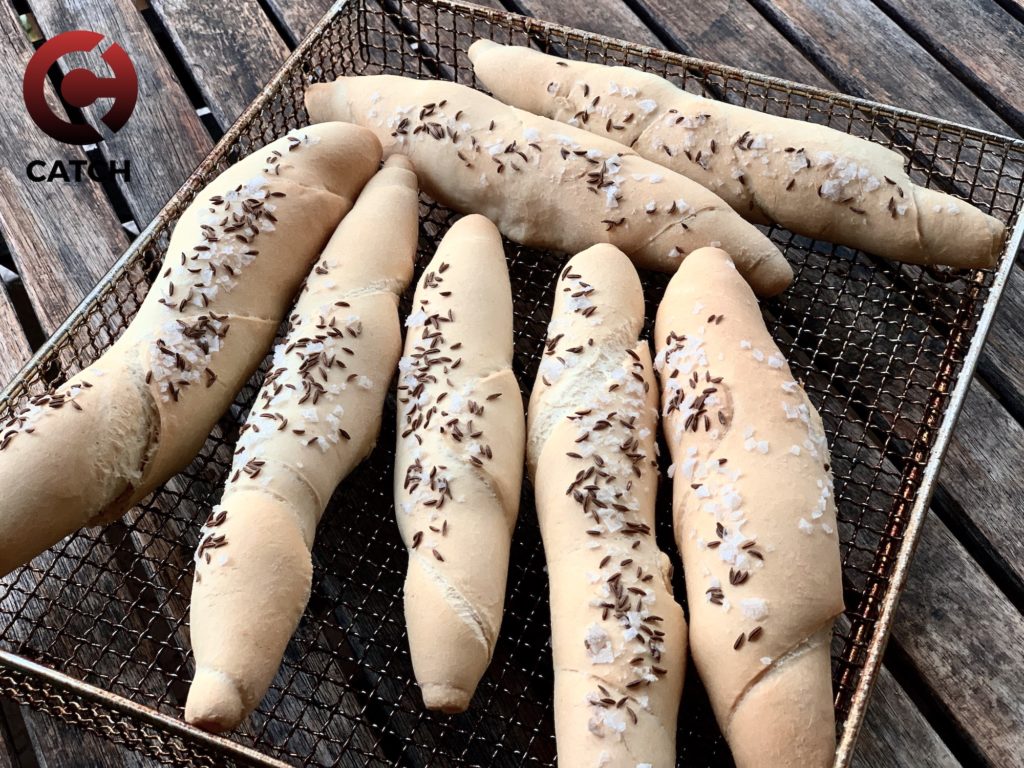
Bread Sticks Recipe
These traditional rolls go by various regional names, such as “salzstange”, “kümmelstange”, or “salzstangerl”. They are easy and quick to prepare on a baking sheet in a mini-oven. The following recipe is for 12 pieces.
For increased accuracy, we recommend using a kitchen scale and go by weight, instead of converting to volume measures. Digital kitchen scales can be set to display grams, otherwise you’d have to convert to dry ounces. It is also helpful if you have an electric kitchen machine to knead the dough, or you will need to knead the dough by hand.
Ingredients (for 12 rolls):
• 500 grams all purpose flour
• 250 milliliters (equals 250 grams) of lukewarm filtered water
• 50 grams melted butter
• 1 tablespoon dried instant yeast
• 1 teaspoon salt
• 1/2 teaspoon sugar
• Coarse sea salt
• Caraway seeds
Instructions:
In a large mixing bowl, pour 100 milliliters of lukewarm water. Add the yeast, sugar, and about 2 tablespoons of flour and whisk until frothy. (Do not add any other ingredients yet!). Let the mix rest in a warm place until it foams up and doubles in size. Depending on temperature, this should take about 10 – 15 minutes. During this time prepare the remaining ingredients (and drink some beer).
Weigh flour and set aside. Weigh butter, melt, and set aside. When the mix from above has doubled in size, add the flour, melted butter, and salt. If using a machine, attach a dough hook and knead on low speed for about 5 minutes or until a smooth and elastic dough forms. (Or hand knead on a lightly floured work surface for about 6 – 8 minutes). Put the dough into a lightly-oiled bowl, cover with a kitchen towel, and let rest until is has doubled in size (depending on temperature, about 1 – 1.5 hours).
Preheat conventional oven to 400º F. Divide the dough into 12 parts, equally. Using your hands, shape divided parts into a round ball. Lightly dust a work surface with flour.
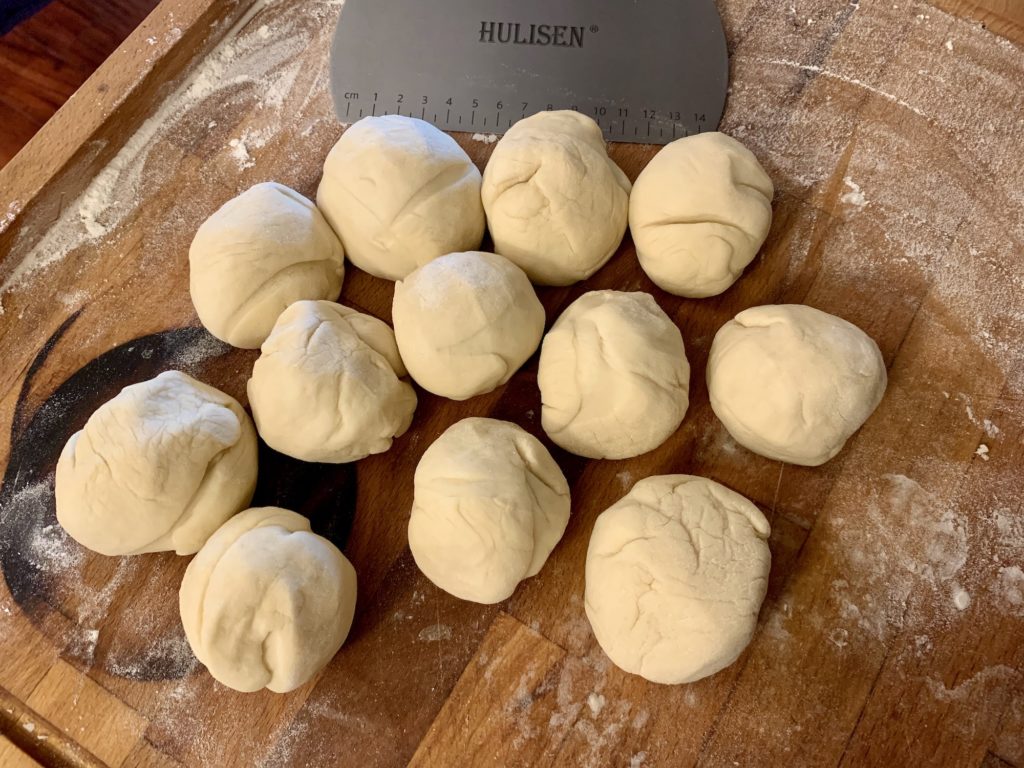
Use a rolling pin to roll each ball into an oval shape and very thin – about 1/8 inch thick. With one hand, hold down the bottom end of the dough piece and roll it with the other hand, from the top of the oval towards the bottom. Once you have the oval rolled up, seal the middle part by rolling and pressing once or twice. With the fingers of each hands placed on the sides, roll the piece back and forth, pushing down to make the ends pointed. Repeat this for the remaining 11 dough balls. (It takes some practice. If you get impatient, pause and enjoy some more beer).
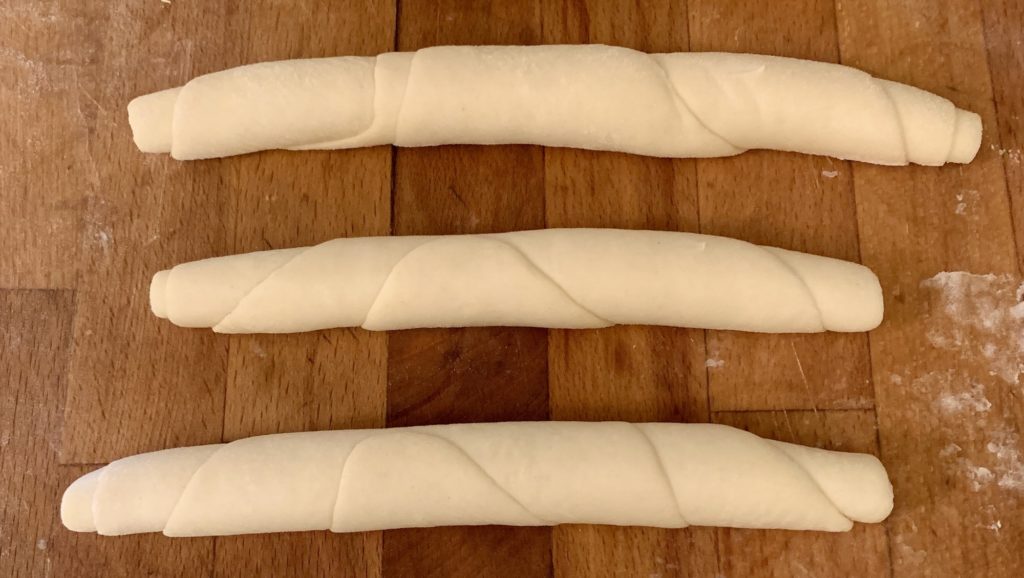
Put all the pieces on lightly oiled aluminum foil or wax paper on a baking tray. Cover with a clean kitchen towel and let rise in a warm place for 15 minutes. (Time for another sip of beer).
Brush the top of the rolls with water (or beer). Sprinkle a clean, flat surface with coarse sea salt and caraway seeds. Gently coat the moistened rolls in the salt and caraway seed mixture and return to the baking sheet.
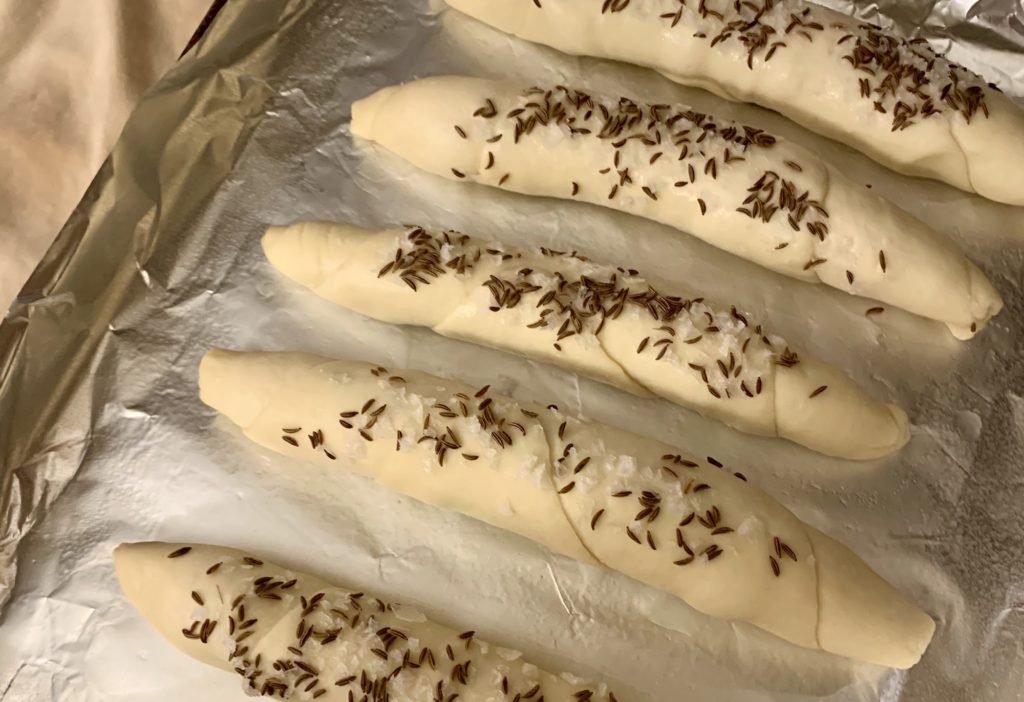
Bake on the middle shelf of the oven for about 15 minutes. We used a mini-convection oven, which ensures even baking. This reduced the beer drinking time to about 10 – 12 minutes. Keep in mind that each oven is different. Cool on a wire rack. (Beer more for time. Prosit!)
PS: For your safety and the safety of others, please stay at home after this baking process.
Reinhard Kargl is a journalist and media professional who normally writes about science and technology. His upcoming eBook about Cocktail Hour will be published this fall. Please email the publisher to be notified of the release date.
In the meantime, please watch this video for more cocktail hour inspirations!







